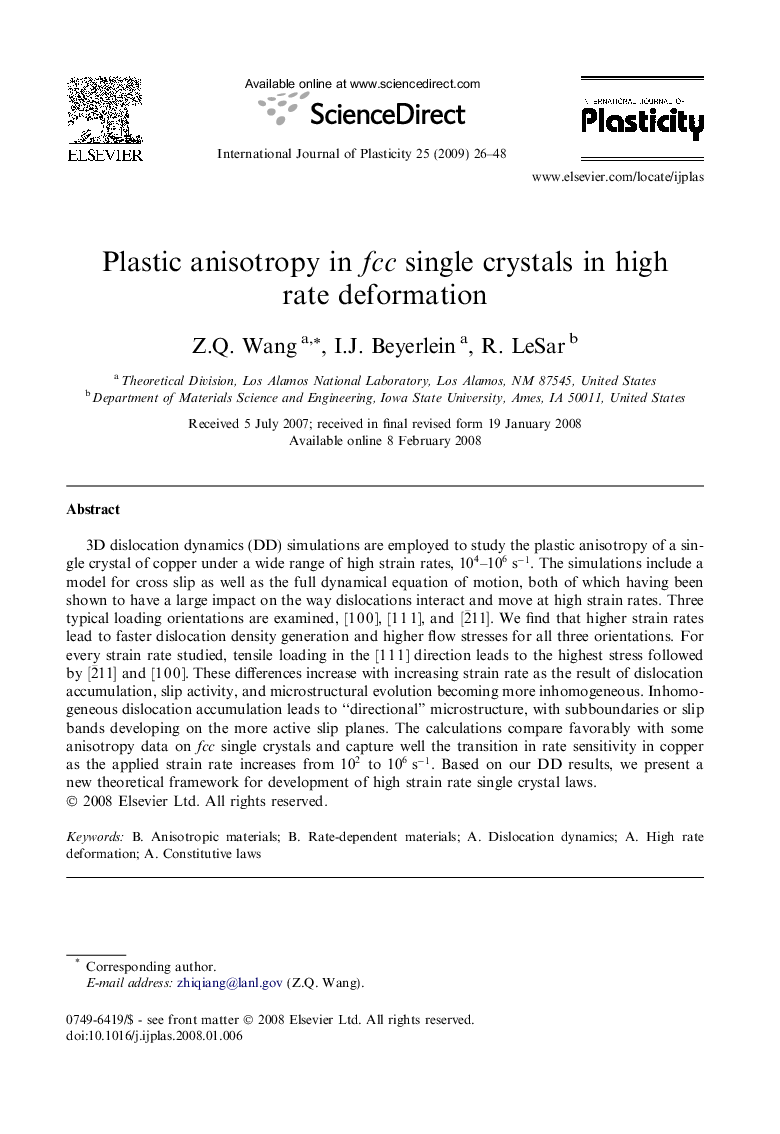| Article ID | Journal | Published Year | Pages | File Type |
|---|---|---|---|---|
| 787491 | International Journal of Plasticity | 2009 | 23 Pages |
3D dislocation dynamics (DD) simulations are employed to study the plastic anisotropy of a single crystal of copper under a wide range of high strain rates, 104–106s-1. The simulations include a model for cross slip as well as the full dynamical equation of motion, both of which having been shown to have a large impact on the way dislocations interact and move at high strain rates. Three typical loading orientations are examined, [1 0 0], [1 1 1], and [2¯11]. We find that higher strain rates lead to faster dislocation density generation and higher flow stresses for all three orientations. For every strain rate studied, tensile loading in the [1 1 1] direction leads to the highest stress followed by [2¯11] and [1 0 0]. These differences increase with increasing strain rate as the result of dislocation accumulation, slip activity, and microstructural evolution becoming more inhomogeneous. Inhomogeneous dislocation accumulation leads to “directional” microstructure, with subboundaries or slip bands developing on the more active slip planes. The calculations compare favorably with some anisotropy data on fcc single crystals and capture well the transition in rate sensitivity in copper as the applied strain rate increases from 102102 to 106s-1. Based on our DD results, we present a new theoretical framework for development of high strain rate single crystal laws.
